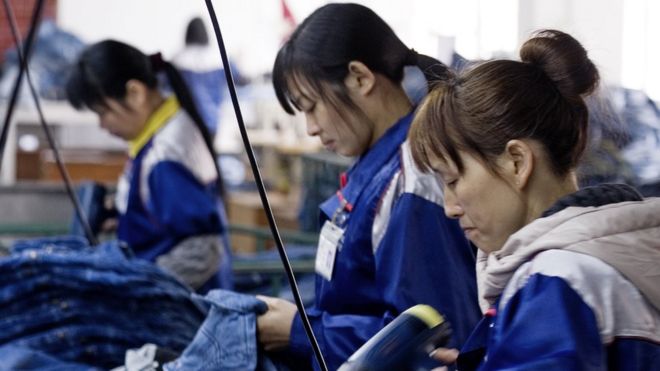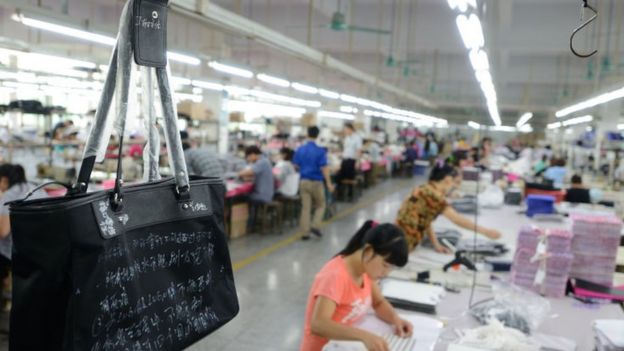 GETTY IMAGES
GETTY IMAGES
China has reported its slowest quarterly growth rate since the global financial crisis.
The growth figure for the July to September quarter was 6.5% from a year earlier, the National Bureau of Statistics said. The result fell short of Reuters analyst forecasts of 6.6%.
Policymakers have moved to support the cooling economy in recent months.
China faces rising economic challenges including high debt levels and an intensifying trade battle with the US.
The impact of the trade dispute with the US is expected to weigh on growth figures in the coming months.
Friday's growth figure was the slowest quarterly expansion since the first quarter of 2009 - the height of the global financial crisis.
The result was also a drop from the 6.7% rate in the prior quarter, but remains in line with the government's full-year target of about 6.5%.
While China watchers advise caution with Beijing's official GDP numbers, the data is seen as a useful indicator on the country's growth trajectory.
 GETTY IMAGES
GETTY IMAGESA 'war on two fronts'
Analysis: Karishma Vaswani, Asia business correspondent
As one China observer told me during a recent trip to Beijing, the country was not expecting to fight a trade war at a time that it was also trying to manage systemic risks in the economy.
They don't have a lot of options on the table. The country is saddled with extraordinary levels of debt so policymakers are reluctant to take measures to stimulate the economy the way they did after 2008.
It means that Beijing is fighting a war on two fronts, without all of the cavalry at its disposal. And it's fighting an increasingly unpredictable and volatile enemy, in the form of an aggressive US administration.
None of which bodes well for China's economic outlook.
Economic risks
For years China has pushed to wean off exports and rely more on domestic consumption for growth.
At the same time, the government has been fighting to contain ballooning debt - driven by a wave of infrastructure development - and a housing bubble without hurting growth.
In recent months Beijing has taken steps to support its economy, including cutting capital requirements to boost liquidity, and ease the slowdown.
Capital Economics China economist Julian Evans-Pritchard said in a research note the latest data showed "some early signs...that policy support is starting to gain traction" but added "more easing will still be needed in order to stabilise growth".
Other data released Friday showed factory output growth in September missed expectations, while retail sales for the month came in slightly above forecasts.
Alongside its domestic challenges, China is also expected to feel the pinch from a trade dispute with the US in the months ahead.
The third-quarter figures are the first to be released by Beijing since US President Donald Trump hit China with two sets of tariffs, targeting $250bn (£192bn) worth of Chinese goods.
No comments:
Post a Comment